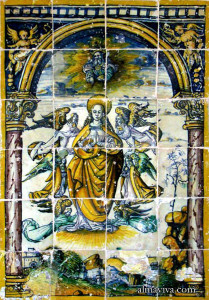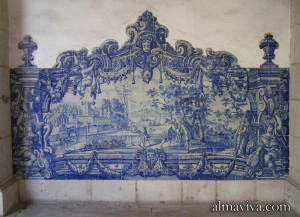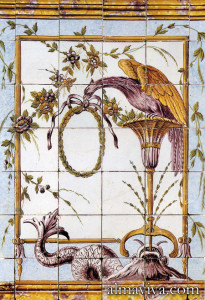Azulejos are tin-glazed ceramic tiles produced in Spain since the 14th century. The word does not come from azul (blue in Spanish) but from the Arabic al-zulay (little polished stone). The term was first used to designate a composition of coloured tiles aimed at copying Roman North-African mosaics. Azulejo then became the common word for an entirely decorated tile of about 13 to 15 centimetres (5 to 6 inches).
Panels of azulejos were first created in Seville around 1500 by an Italian painter, Francisco Niculoso. Niculoso had probably been trained in a Della Robbia family workshop in Florence. The art of azulejos was developed and brought to its highest expression in Portugal during the 17th and 18th century.
See many examples in our gallery of azulejos.
Return to ceramic keywords.







